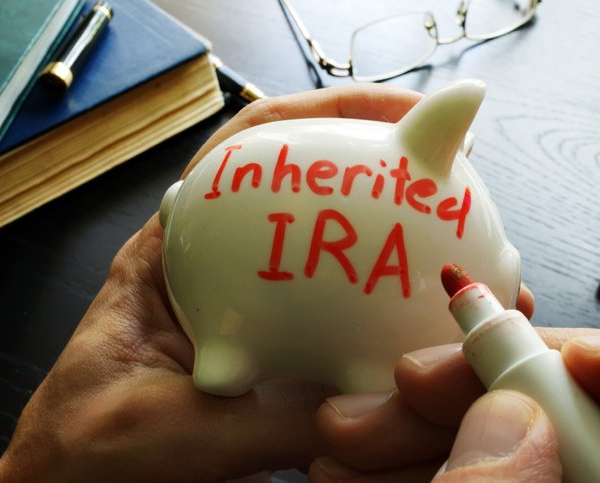Are You Wired for Wealth?
It’s an interesting question: are you wired for wealth? I believe we all are, but we have different biases that can cause us to stumble or get in the way of achieving the financial independence we desire. In our last conversation, we talked about how a financial advisor should get to know you, like I do through a Discovery Meeting. Today, I want to dive a little deeper into why you do what you do--financially. Let’s see how you are wired and how those influences and biases may be affecting your decisions concerning your assets and wealth management planning.
The Psychology of Investing
In the fields of psychology and economics, it’s largely accepted that people are wired with natural biases that adversely affect their self-interest. This means that being a good investor is not just a matter of being informed; it also means you need to understand what’s motivating your behavior. Could it be your wiring? Let’s take a look at overcoming behavioral biases and how those biases affect wealth management.
The first step to successful wealth management is to be aware that these biases exist, challenge yourself to see if you are affected by one or more of them, and then take actions to overcome them.
Emotional Biases versus Cognitive Biases
In general, behavioral biases fall into one of two categories: emotional biases and cognitive biases. Each comes with its own particular set of drawbacks.
Emotional biases stem from impulse or intuition; emotional biases may be considered to result from reasoning influenced by feelings. Both types of bias lead us to make decisions that are very different from the type of rational decisions finance has traditionally assumed people make.Cognitive biases/errors stem from basic statistical, information-processing, or memory errors; cognitive errors may be considered the result of faulty reasoning.
Let me introduce you to some of the common biases that may be causing you to make suboptimal investment decisions that are affecting your bottom line. In this blog, I will present four common emotional biases that you will want to be aware of, as well as some advice on how to modify your behavior and adapt to these biases.
Four Common Emotional Biases
Status Quo Bias
The Status Quo bias is an emotional bias in which people do nothing instead of making a change.People are generally more comfortable keeping things the same than with change and thus do not necessarily look for opportunities where change is beneficial.
The consequences of this bias are that you could unknowingly maintain portfolios with risk characteristics that are inappropriate for you. You may then fail to explore other opportunities instead by quantifying the risk-reducing and return-enhancing advantages of diversification and proper asset allocation. Status quo bias can be exceptionally strong and difficult to overcome.
Self-Control Bias
Self-control bias is an emotional bias in which people fail to act in pursuit of their long-term, overarching goals because of a lack of self-discipline. People know they need to save for retirement, but they often have difficulty sacrificing present consumption because of a lack of self-control.
To mitigate the negative impact of self-control bias, it’s important that you create a financial plan to address retirement savings and have a personal budget. A trusted financial advisor can help you with setting clear and actionable savings goals and then help you stick to them. This plan needs to be in writing so that it can be reviewed regularly. It is advisable to consider ways to save more that don’t rely on self-control; for example, automatic savings in your 401(k) plan, increasing savings over time, and increasing savings when you get a raise are all good ways to ensure that you have enough money later.
Inheritance/Endowment Bias
This is a common emotional bias in which people may irrationally hold onto securities they already own, particularly inherited investments, either for reasons of loyalty, or in some cases, taxes or transaction costs. This can lead to a failure to sell certain assets and replacing them with an appropriate asset allocation for investors’ levels of risk tolerance and financial goals because the investor has an emotional attachment to the inherited assets.
The Inheritance/Endowment bias is closely linked to the next bias, the Regret-Aversion bias, and the Status Quo bias which we just reviewed. This bias often causes us to hold on to securities long after they’re no longer relevant to our goals.
One way to overcome inheritance bias is to ask yourself, “If an equivalent sum to the value of the investments inherited had been received in cash, how would I invest the cash?”
Regret-Aversion Bias
Regret-aversion bias is an emotional bias in which people tend to avoid making decisions that will result in action out of fear that the decision will turn out poorly.
One consequence of Regret-aversion bias is overly conservative investment choices, which are often based on risky investments and losses in the past. This can lead to long-term underperformance and potential failure to reach investment goals. A classic example of this bias is people being reluctant to sell when they should because they fear that the position will increase in value and then they will regret having sold it.
An important tip for dealing with this bias includes setting price targets to take the emotion out of the buy or sell decision, as well as making sure that each decision is well researched and consistent with your asset allocation strategy and long-term goals.
I hope you found this discussion about the emotional biases helpful in identifying areas where you might be struggling. These biases can affect your wealth management planning. Recognizing your biases is a great first step in being open to a new way of thinking concerning your assets.
Next time, we will learn about Cognitive Biases and how they affect your wealth management planning. So which of the 4 emotional biases discussed have you struggled with? How did it affect a decision you had to make? Let me know below.













